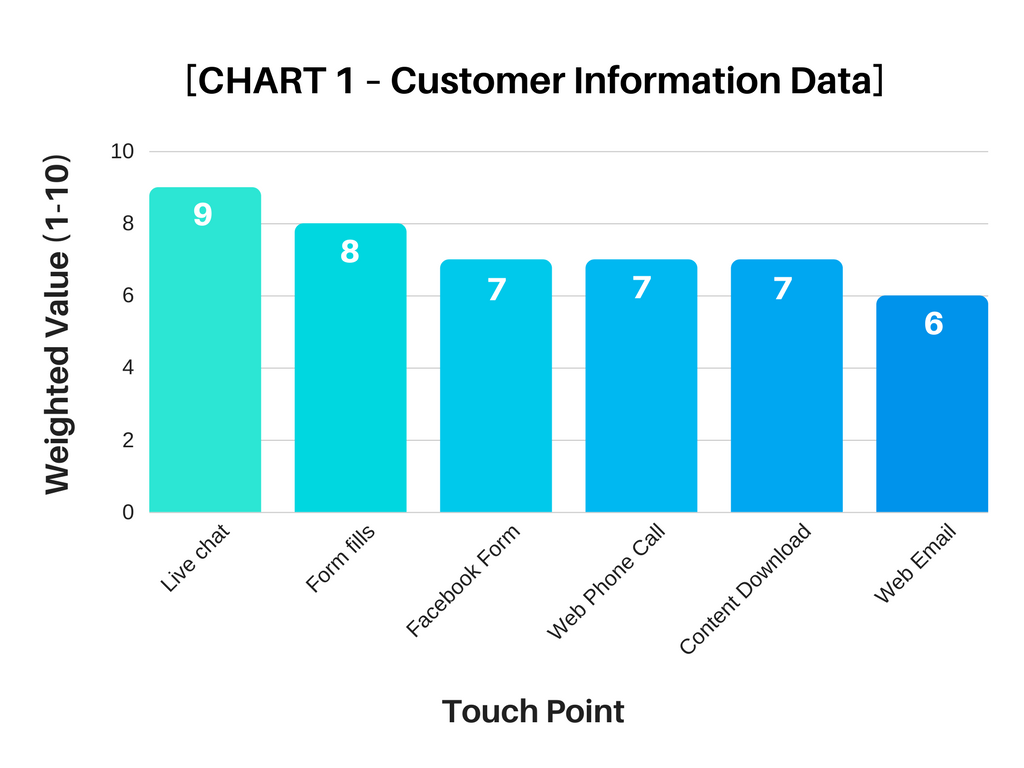
Photo Credit: Pexels.com – Negative Space – CC0 License
If you’re like me, your marketing initiatives are connected to many data sources providing varying levels of information. Some complex and instant; some not. All of them are important, however, and help communicate a complete story of your customer as they interact and connect with your brand.
Regardless of your plan of attack after you review your data, you need to have quality data in order to make a quality assessment. (Funny how those two go together). Let’s take this a step further. I think you may agree that lots of data are not always the answer to help your marketing team craft the right strategies. Sometimes it’s about figuring out what data you can capture that is most important and also discerning the most important touch points and their value to your marketing – that’s where lead scoring comes in.
Scoring will provide clearer insight into each customer touch point, thus making your ability to assess each point and conversion metric more accurate. Over time, trends will appear and deeper insights will emerge.
Lead Scoring – One Size Does Not Fit All
Depending on your industry, product or service, lead scoring methods can vary greatly. However, there are several approaches that may crossover to nearly any industry. Here are eleven ways you may want to consider scoring as you develop your own system for your sales and marketing team.
All of these below can be scored based on the prospective customer’s user behavior as it relates to their level of engagement with touch points that lead to conversion. Your website’s analytics along with additional means of collecting conversion data and interactions are a great way to begin to develop a score for each of the items below. For instance, a 1-10 measurement weighted system can be a simple way to provide a value for each touch point. Here’s a sample system to help you see how it could work for your marketing. Remember, not all lead scoring methods will be effective for all industries and brands. You will need to understand what methods are most important for your sales and marketing. Please note: This is not a marketing plan, it’s a sample of how you could score based on what is identified in both charts below.

Additionally, Chart 2 outlines touch points that gather data, but not specific customer data. It’s less specific, higher level user data that is more engagement-oriented. It’s important to understand, but not hard-core lead-gen.

“Website behaviors are some of the most important metrics to help you score leads. These can often tell you how engaged with your company a prospect really is.” – IMPACT: Kevin Phillips
Look At The Underlying Data For Each Touch Point
Each of the eleven items listed above are important in your marketing process. But do you really know which ones are worth investing additional resources in and why? If you don’t, start looking at the underlying data associated with each. I guarantee you will find some very interesting customer-to-company engagement and lead-gen information that will help you figure out what sort of weighted number each touch point deserves. As you measure these over time you will begin to see changes in customer engagement habits. When changes occur, it’s exciting to be on the forefront of discovery!
Scoring each touch point will help your team understand what part of your customer path is working. For instance, the first touch with a prospect might be a social media advertisement. The second touch point in the path after the social ad could be a website landing page. If both are providing data that is positive and trending in the right direction, then you know they are both working the way you want them to work. If the ad data is good, (CTR is high), but stickiness on your landing page is low and exit page numbers are high from that page, your landing page would be your problem. These numbers are very important in relation to your customer path.
“Companies use a range of calculation methods to score and rank leads. Many data points can be used and not every one is relevant to every brand. Typically, companies score leads based on the performance they’ve seen from leads in the past.” – CoxMediaGroup: Carlyle Creel
How To Go From Lead Monitoring To Lead Scoring
Let’s face it, lead scoring is not the most popular exercise among marketing circles because it takes time and resources to pull it off successfully. Lead monitoring has become more commonplace by a long shot. So how does a marketing team go from lead monitoring to lead scoring? First, determine your most important conversion points based on the level and detail they provide. Those should be weighted the most. You should always consult your sales team to get their perspective before you make a final decision. Then decide which basic website and social information that is not customer specific data you are measuring and score them with a lower weighted value. That’s as simple as it gets. Start there and you will soon be on your way to learning more about your customer, your conversions, and your marketing methods.
Scott MacFarland is a lifelong marketer with a passion for content, marketing, digital, social, web, video, analytics, and all things that lead to successful conversions. Scott is currently the Marketing Director for HMY Yachts in Jupiter, Florida.
Follow Scott on LinkedIn or Twitter
Photo Credit: Pexels.com – Negative Space – CC0 License
https://www.pexels.com/photo/macbook-pro-on-brown-table-139387/
Sources:
https://www.impactbnd.com/blog/hubspot-lead-scoring-best-practices
https://www.huffingtonpost.com/scott-macfarland/4-tips-to-help-understand_b_9852164.html
http://blog.cmglocalsolutions.com/lead-scoring-101-how-to-calculate-every-leads-value
